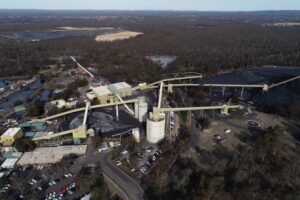The surge in large scale and rooftop solar and the relative inflexibility of the state’s large coal-fired generators has again sent day-time wholesale electricity prices negative in Queensland.
Last week, it happened on two consecutive days – both around 12pm. As we’ve reported, this is not the first time – we reported on events in June where a similar event occurred. This is expected to become more frequent as some 2,000MW of large scale solar is added to the already more than 2,000MW of rooftop solar in the state.
Dylan McConnell, from the Climate and Energy College in Melbourne, says there’s been eight negative trading intervals in the day since the start of this year. One of those was at 8.30 in the morning (normally a time of peak demand).
These latest occurred last Wednesday and Thursday – once in the early afternoon (see graph below) and another just before midday.
 Negative prices have been a feature of Australia’s electricity grid since the creation of the National Electricity Market nearly two decades ago. Mostly, they happened at night-time because there was less demand and coal fired generators competed for the right not to be scaled down, so they bid the prices in negative territory.
Negative prices have been a feature of Australia’s electricity grid since the creation of the National Electricity Market nearly two decades ago. Mostly, they happened at night-time because there was less demand and coal fired generators competed for the right not to be scaled down, so they bid the prices in negative territory.
That happened as recently as last December and on at least two occasions in November in Queensland, where early morning (5am) trading interval saw coal generators bid the price to the market floor to try and earn the right of market dispatch.
The emergence of wind energy in South Australia has created more instances of negative pricing, and now the emergence of solar as a significant force in the day-time means this is happening in multiple states.
Apart from the occasions in Queensland, it has been occurring in Western Australia too – it occurred four times in a week last month, as we reported here – and could also occur in South Australia, where rooftop solar is pushing demand down to record lows.
Day-time negative prices are not just a problem for coal or even gas generators – they will also create issues for solar farms, and are likely to increase efforts to shift demand to the middle of the day (such as the solar sponge for hot water heating), and for other forms of storage, such as batteries and pumped hydro.
It is just one of many changes happening on the grid. As we also report today, the combined output of large scale solar farms surpassed 1GW for the first time on Sunday, and the combination of rooftop solar and big solar sent grid demand in South Australia to a record low.










